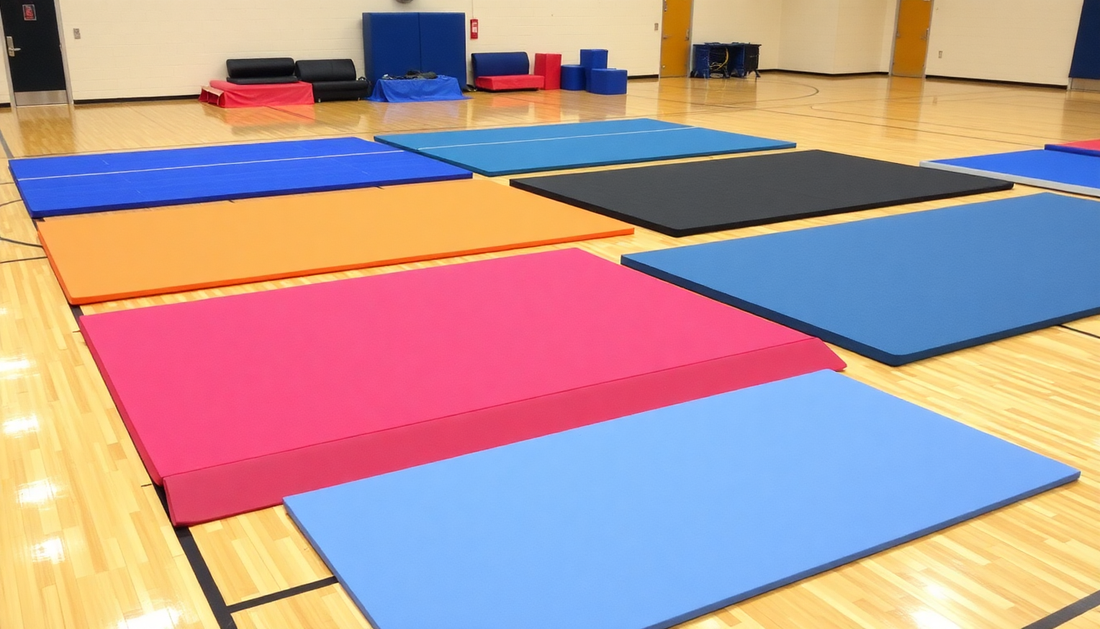
The Essential Guide to Choosing the Right Rhythmic Gymnastics Mats for Safety and Performance in 2025
Share
Introduction
In the world of rhythmic gymnastics, every detail counts. From the grace of a routine to the equipment used, ensuring optimal performance and safety is paramount. One of the most critical pieces of equipment for any rhythmic gymnast is the mat. In 2025, the options for rhythmic gymnastics mats have expanded, making it essential for gymnasts and coaches to stay informed about the best choices available. This comprehensive guide will explore the importance of selecting the right mat, the types available, key features to consider, safety considerations, and tips for maintaining your mat.
Why the Right Mat Matters
Using an appropriate mat is fundamental in rhythmic gymnastics for several reasons:
- Shock Absorption: The impact from jumps and landings can be intense. The right mat absorbs shock, reducing the risk of injuries such as sprains or fractures.
- Stability: A stable mat provides a reliable surface for gymnasts to perform their routines, enhancing balance and control.
- Comfort: Mats with adequate cushioning can make practice sessions more comfortable, allowing gymnasts to focus on their performance rather than discomfort.
- Durability: Investing in a high-quality mat means it can withstand extensive use and wear, providing value over time.
Types of Rhythmic Gymnastics Mats
There are various types of mats available, each designed for specific training needs:
- Folding Mats: These mats are portable and easy to store, making them ideal for at-home practice or small gym spaces. They typically fold into sections, allowing for easy transport.
- Roll-Up Mats: Providing a continuous surface, roll-up mats are suitable for larger spaces and can be easily rolled up when not in use. They are often used in training facilities.
- Competition Mats: Designed to meet the standards set by the International Gymnastics Federation (FIG), these mats are used in official competitions and provide the necessary features for safe and fair performances.
- Landing Mats: Extra thick and cushioned, landing mats are used for more intense training, allowing gymnasts to practice difficult skills with reduced risk of injury.
Key Features to Look For
When selecting a rhythmic gymnastics mat, it's essential to consider key features that enhance performance and safety:
- Thickness: A thicker mat generally provides better shock absorption. Look for mats that are at least 1.5 inches thick to ensure adequate cushioning during landings.
- Material: High-density foam is commonly used for its durability and support. Mats made from PVC or similar materials are often easier to clean and maintain.
- Surface Texture: A non-slip surface is crucial for safety, providing traction for gymnasts while they perform their routines. Additionally, consider mats with a soft texture for added comfort.
- Size: Ensure the mat is large enough for the gymnast’s routines. Standard sizes are typically 4x8 feet or larger for competition mats. Always measure the practice space to ensure a proper fit.
- Weight: Depending on your needs, consider the weight of the mat. Heavier mats may provide better stability but can be less portable, whereas lighter mats are easier to move but may shift during use.
Safety Considerations
Safety should always be a priority when selecting and using a mat. Here are some important safety considerations to keep in mind:
- Check for Certifications: Look for mats that have been tested and certified to meet safety standards set by organizations like FIG or ASTM. This ensures that the mat is safe to use.
- Inspect Regularly: Regularly check your mat for any signs of wear, such as tears or dents. Damaged mats can compromise safety and should be replaced immediately.
- Proper Placement: Ensure the mat is placed on an even surface to prevent slips and falls. Avoid placing mats on top of carpet or uneven flooring.
- Avoid Overuse: Even the best mats can wear down over time. Make sure to rotate mats if you have multiple, and give them time to recover from extensive use.
Maintenance Tips for Your Gymnastics Mat
To prolong the life of your rhythmic gymnastics mat, follow these maintenance tips:
- Cleaning: Regularly clean your mat with mild soap and water to remove dirt and sweat. Avoid harsh chemicals that can damage the material.
- Drying: Allow your mat to dry completely after cleaning to prevent mold and mildew from developing. Store it in a well-ventilated area.
- Storage: When not in use, store the mat in a cool, dry place away from direct sunlight to prevent fading and deterioration.
- Use a Cover: If possible, invest in a mat cover to protect it from dust and damage during storage.
Conclusion
Choosing the right rhythmic gymnastics mat is essential for both safety and performance in 2025. By considering the types of mats, key features, safety measures, and maintenance tips, gymnasts and coaches can enhance their training experience and reduce the risk of injury. Take the time to research and invest in a quality mat that meets your specific needs, and watch as it positively impacts your gymnastics journey.
Stay Tuned for More Tips and Inspiration
Don't miss our weekly posts filled with rhythmic gymnastics tips, inspiring quotes, apparatus guides, and motivational stories to keep your passion for gymnastics alive! Whether you're a beginner or an advanced gymnast, there’s always something new to learn and explore in the world of rhythmic gymnastics.
